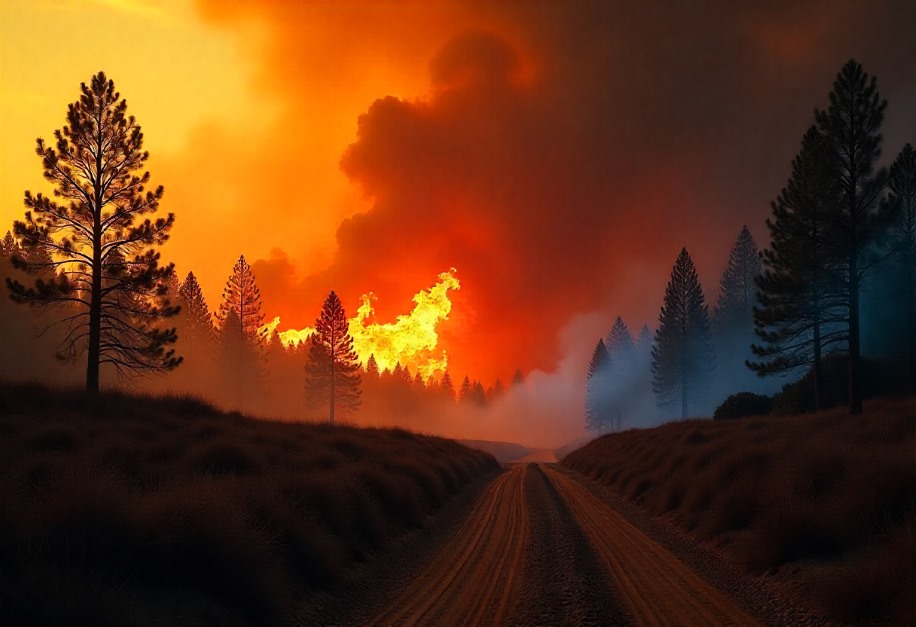Published on
August 24, 2025
By: Paramita Sarkar
As global heatwaves, wildfires, and extreme weather events continue to disrupt traditional tourist hotspots, travelers are turning to cooler destinations like Abu Dhabi, Switzerland, Sapporo, Harbin, Copenhagen, and Paris for relief. The growing coolcation travel trend is reshaping global tourism as more people seek milder climates to escape the harsh heat brought on by climate change. These destinations are emerging as top choices, offering not only respite from soaring temperatures but also innovative solutions to help visitors stay comfortable amidst rising heatwaves.
What Is Driving This Trend?
As the world grapples with climate change, extreme weather events such as heatwaves and blazing wildfires have become more common. These conditions have had a significant impact on the tourism industry, with many popular tourist spots experiencing closures and decreased visitor numbers. Cities like the Acropolis in Athens and the Eiffel Tower in Paris have had to shut down during extreme heat, leaving tourists looking for alternatives.
According to the European Commission, regions in northern Europe are experiencing a rise in demand for tourism during the summer months, while southern Europe is facing a decrease. The trend is a result of the uneven impacts of climate change, with areas that traditionally attracted summer tourists now becoming less appealing due to high temperatures.
Where Are Tourists Going?
The shift in tourism patterns has led to a surge in demand for cooler destinations. Cities like Abu Dhabi in the UAE are integrating both ancient practices and modern technologies to combat extreme heat. Abu Dhabi’s Masdar City, known for its sustainability, generates much of its energy from solar panels and offsets carbon emissions. Additionally, the city utilizes traditional barjeel wind tunnels and narrow streets that create microclimates to help lower temperatures.
In Harbin, China, a city known for its frigid winters, summer tourism is booming. Harbin’s Ice and Snow World, the world’s largest winter theme park, has introduced snow-making technology that allows the park to operate even in warmer months. This innovation is attracting tourists looking for a cool escape from China’s hotter regions.
Sapporo, Japan, is also seeing a rise in popularity. Known for its milder summer temperatures, the city utilizes its abundant snowfall to cool urban spaces, using snow-melt systems in parks and malls. These creative solutions are making Sapporo a go-to destination for tourists seeking relief from Japan’s sweltering heat.
When Did the Shift Begin?
The trend towards coolcations began as the effects of climate change became more pronounced. Extreme temperatures and weather events over the past few years have led many tourists to rethink their travel plans. In Europe, for example, a study by the European Commission noted that regions like the northern coastal areas are seeing an increase in demand, while southern destinations are losing tourists due to heat. This shift is expected to continue as climate change intensifies.
Why Are Tourists Seeking Cooler Destinations?
As heatwaves grow more intense and widespread, tourists are seeking destinations that offer respite from the oppressive heat. In Copenhagen, Denmark, the city is promoting sustainable tourism by rewarding visitors who travel by train with discounts and excursions. Copenhagen’s efforts to clean its harbor have led to the development of open-water swimming lanes and public parks that also act as cooling spaces.
Meanwhile, Phoenix, Arizona, is combating extreme heat with its Cool Pavement program, which coats streets with reflective materials to reduce temperatures. The city has also adapted by offering alternative, cooler activities, such as tubing on the Salt River and flashlight tours of the Desert Botanical Garden during the evening.
Paris, despite facing high temperatures, has rolled out over 800 ‘cool islands,’ including parks, swimming pools, and shaded walkways to help visitors cool off. The city has also reopened swimming in the Seine River for the first time in a century, following a major sewer system upgrade.
Here’s the table summarizing the coolcation destinations and their strategies to beat the heat:DestinationCooling StrategyKey AttractionAbu DhabiMasdar City with solar panels and wind tunnelsSustainable city with advanced cooling technologySwitzerlandAlpine views and lakeside retreatsCool mountain air and scenic landscapesSapporoSnow-melt systems in urban spacesChilled snow water for air conditioningHarbinHarbin Ice and Snow World with snow-making technologyWinter theme park with ice sculptures in summerCopenhagenCopenPay program for sustainable tourism and cool public spacesDiscounts for eco-friendly travel and cool public spacesParis800+ cool islands including parks, swimming pools, and shaded areasSwim in the Seine and oasis squares in the city
How Are Destinations Adapting?
To attract tourists, cities and regions are implementing creative solutions to help visitors beat the heat. Singapore, known for its iconic Supertrees, has incorporated green technologies to regulate temperatures. These vertical gardens serve as both tourist attractions and functional climate regulators. The city also uses Airbitat systems, which are 80% more energy-efficient than traditional air conditioning, at public events like the Singapore Grand Prix.
Similarly, Switzerland continues to captivate travelers with its stunning alpine views and cool mountain air. The country’s tourism offerings, including hikes and lakeside retreats, remain a popular choice for tourists looking to escape the summer heat elsewhere.
Conclusion:
As the world’s climate continues to change, the tourism industry is adapting to new patterns. Tourists are increasingly seeking cooler destinations like Abu Dhabi, Sapporo, and Switzerland to avoid the extreme heat affecting traditional vacation spots. Cities worldwide are embracing sustainable and innovative solutions to create environments where visitors can enjoy their vacations in comfort. With this shift towards coolcations, the global tourism landscape is being reshaped to accommodate the needs of travelers in an era of climate change.
